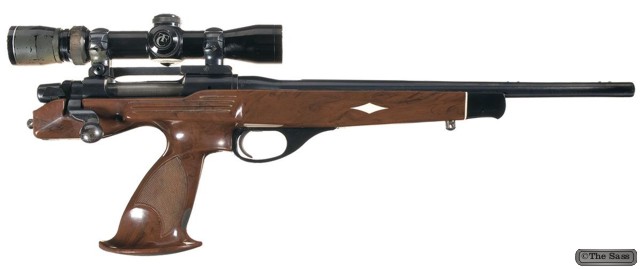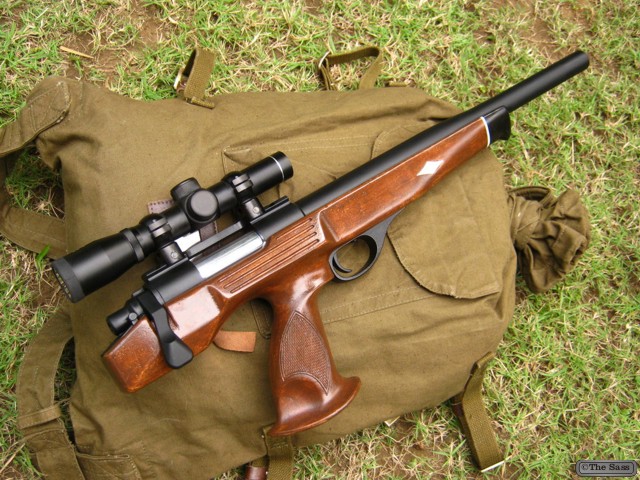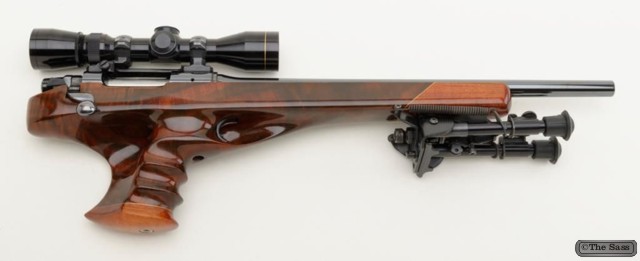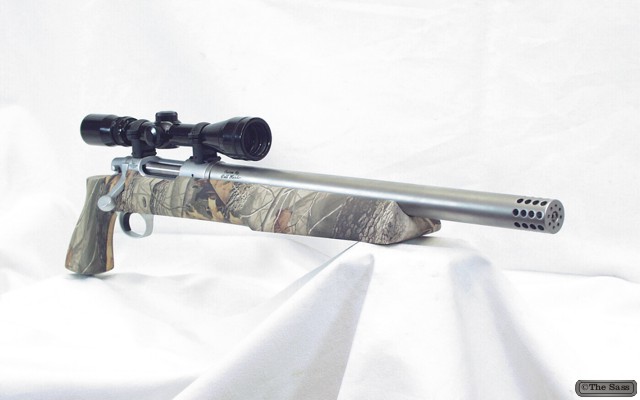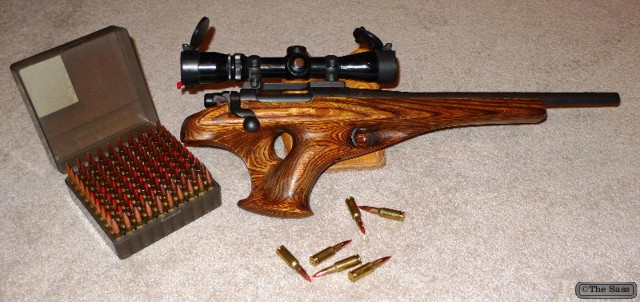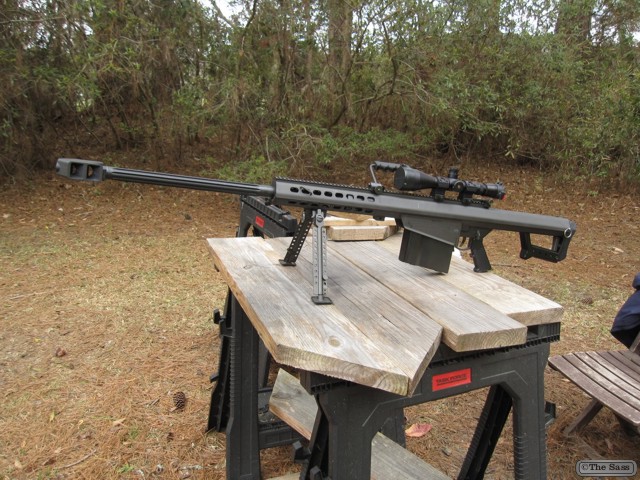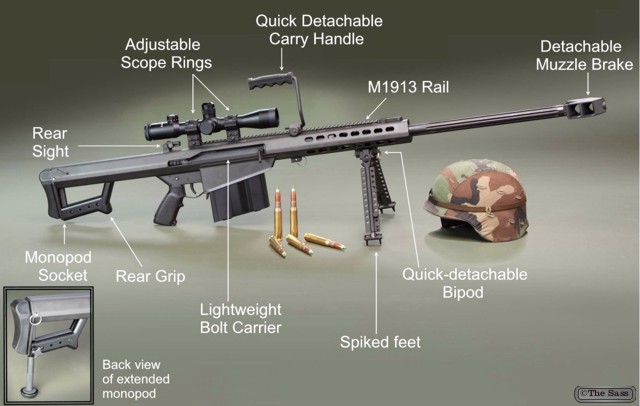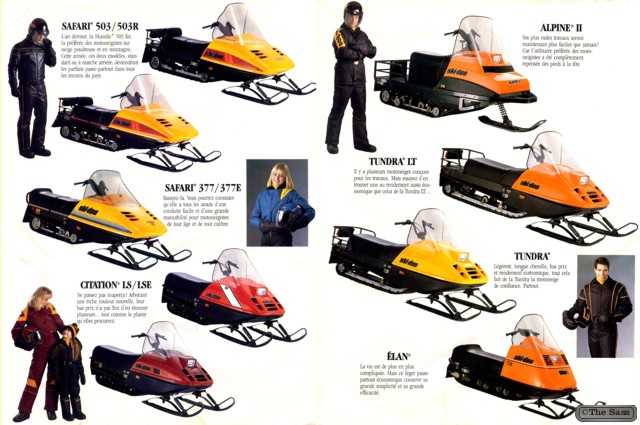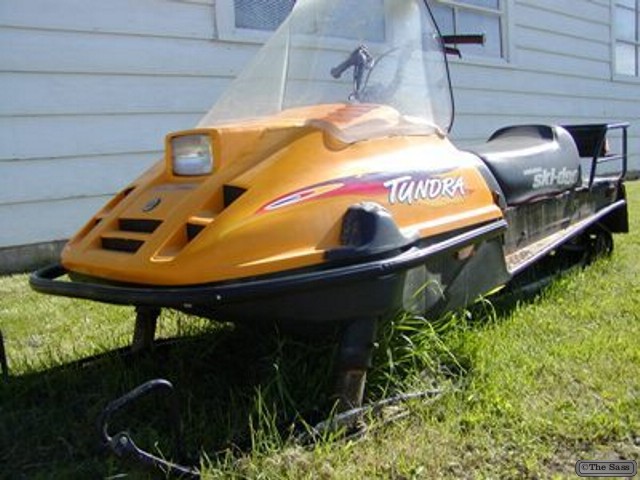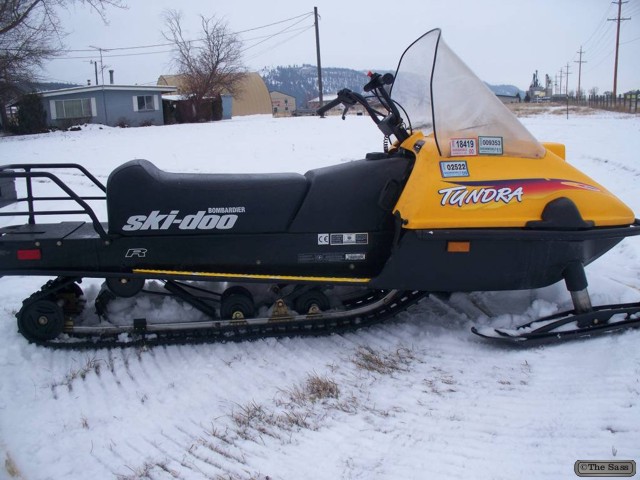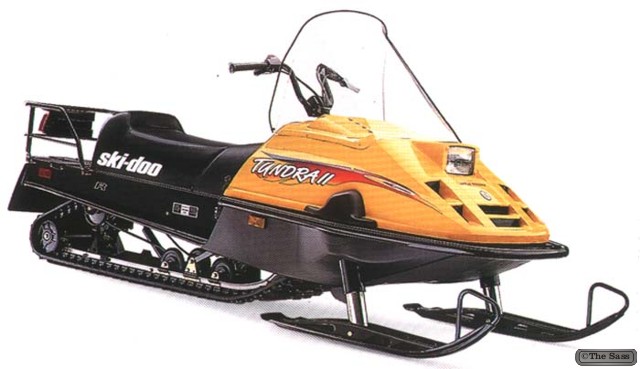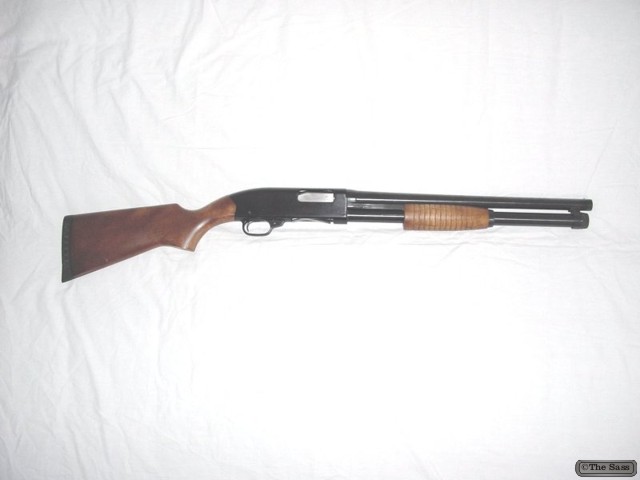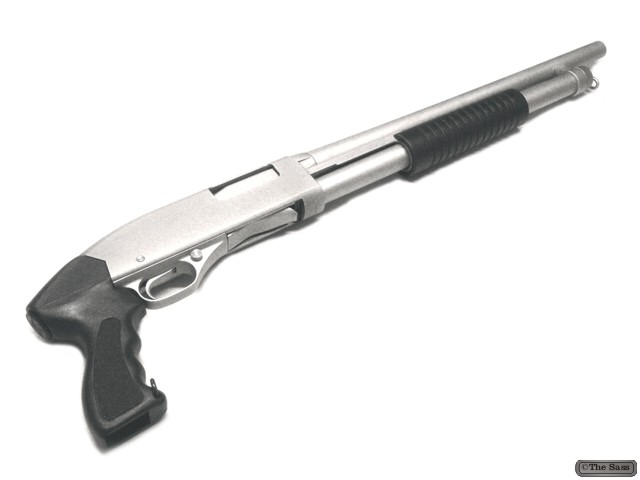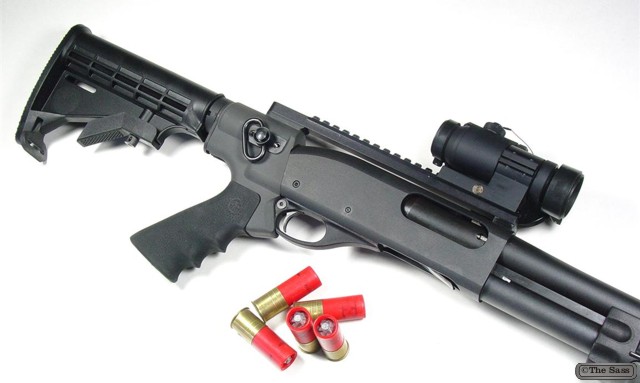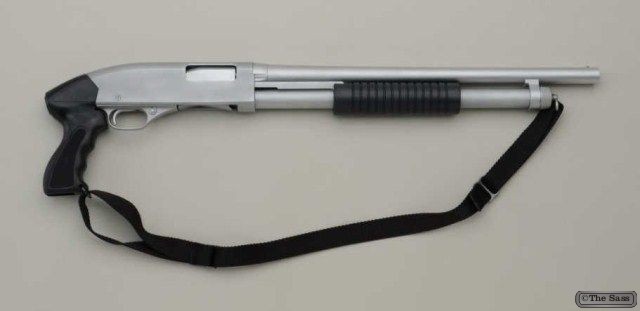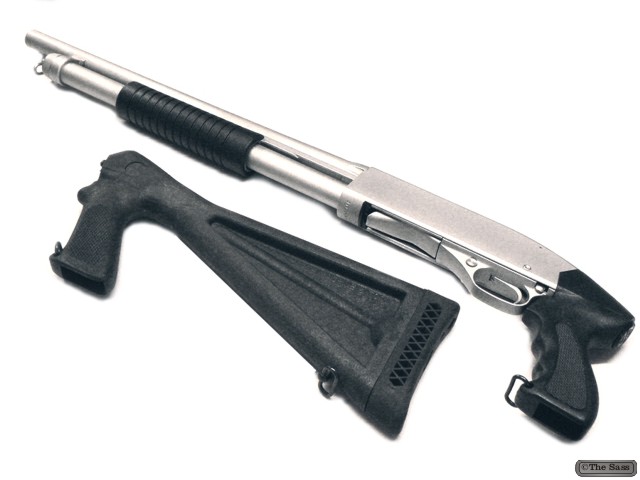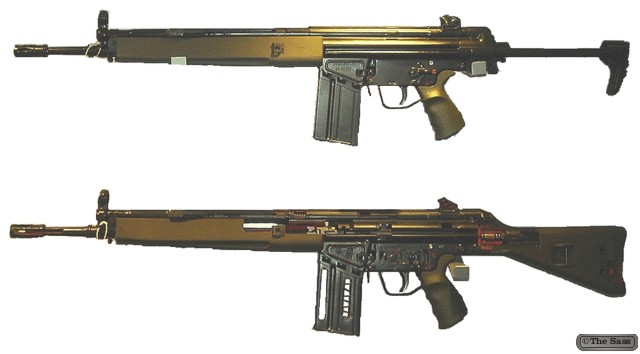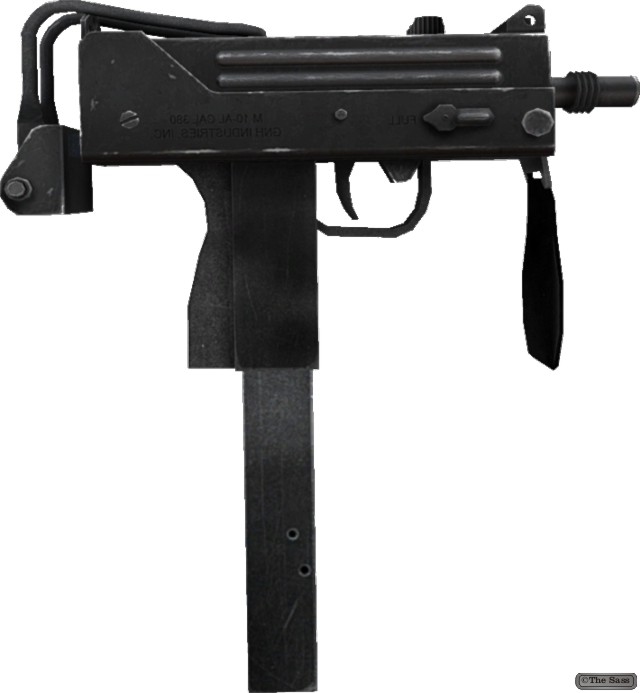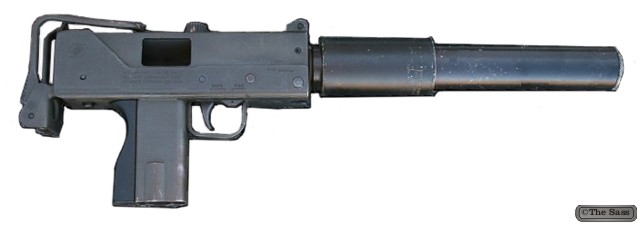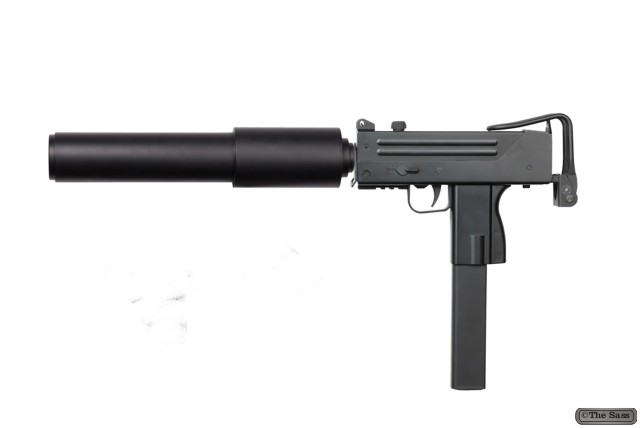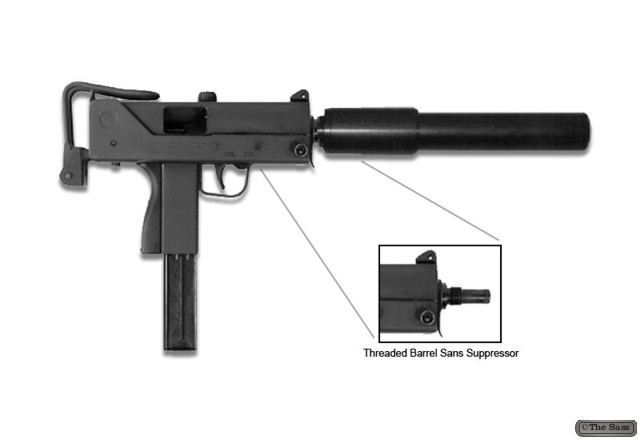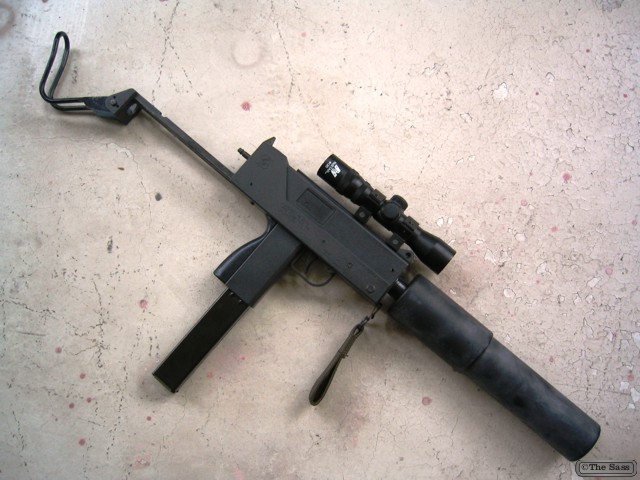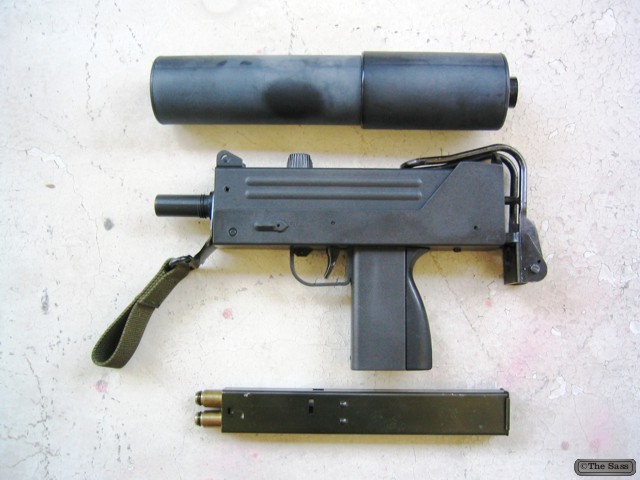TheSass
Epilogue
Two months had passed since the attack on the Gates of Doom. Summer was soon approaching. The kingdom was slowly recovering from twenty years of war. Magic was once again flowing through the land. The rumours of unrest in the Empire across the Sea of Dreams, were soon forgotten in the elation that followed the victory. The dark races had been banished, deep into the Howling Mountains. The only dark spot was that Magdar’s body had disappeared during the commotion that followed the attack. It was said to have been taken by trolls, deep into the mountains. They could dispose of it as well as the King.
Ludger was laying in bed, at home, thinking. Nathalia’s hair formed a dark metallic cloud around her head, resting on the crisp percale pillowcase. His future, in this world, looked bright. In a few weeks a double ceremony would give him the title of Duke of the Mist of Dreams, as well as wed him to Nathalia.
The day to day affairs of this world, now that the excitement of the war was gone, left him wanting for more. He was planning to explore this world in the company of Nathalia. His fiancée stirred on the bed beside him. Thinking of her always brought a smile to his face.
She turned to him, coiling her naked body against his. She rested her cheek on his shoulder and blew a stream of air in his ear. She looked at him with sleepy eyes. With a yawn she said.
“Are you still bored? Does life as to be boring to you if there is no quest to follow or damsel-in-distress to rescue?”
“I am not bored. My hands are full, as it is, of a particular damsel-in-distress that I have rescued. I am no longer in that business. I don’t think that I could handle more.”
She playfully bit one of his nipples and said.
“Do you still plan to go exploring the world? We should stay in Talenthar. The nightlife is much better.”
“How do you know that? When we are out there, we never go out. You always keep me locked up in the bedroom.”
“Do you complain?”
“No…, but I am not getting any younger. You will drain me of all my energy. You still have not told me, how you know about the nightlife.”
“Maria told me. She says it is fantastic. She also showed me many other tricks.” She looked around the room and continued, whispering in his ear. “You would not have, by any chance, any soft butter laying around the room? I would like to show you one of those tricks.”
Ludger thought that he definitively had a lot to look forward to, whether he decided to travel or not.
THE END
For Now

This work is licensed under a Creative Commons Attribution-NonCommercial-NoDerivatives 4.0 International License.
From 1990: One Way Ticket To Talenthar
The Sass
The Remington XP-100 (from eXperimental Pistol number 100) is a bolt action pistol produced by Remington Arms from 1963 to 1998. The XP-100 was one of the first handguns designed for long range shooting, and introduced the .221 Remington Fireball (often called .221 Fireball), which is still the fastest handgun cartridge ever produced by a major ammunition maker. The XP-100 was noted for its accuracy and is still competitive today in the sport of handgun varminting, which it helped create.
Overview
The XP-100 was based on Remington’s short action bolt action carbine, the Remington Model 40X, which influenced the later Remington Model 600 rifle. The XP-100 was initially introduced with a 10¾” barrel set into a nylon stock with an unusual center-mounted grip. Chambered in .222 Remington in early prototypes, the short barrel produced significant noise and muzzle flash. Subsequently the case was shortened to reduce powder capacity to a volume more suited to the shorter barrel of a pistol. The resulting cartridge, the .221 Fireball, produced factory loaded velocities of over 825 m/s (2700 ft/s) from the short barrel, and accuracy rivaling the parent .222 Remington, one of the most accurate cartridges made.
All but the XP-100R model were single shot designs, while the XP-100R had a small internal magazine (holding four rounds), similar to most bolt action rifles. The R model – for “repeater” – was made 1991-1997 in .223 Rem., .250 Savage, 7mm-08 Rem., .308 Win., .35 Rem., and 350 Rem. Mag. It was reintroduced in 1998, this time without sights, in .223 Rem., .22-250 Rem., .260 Rem., and .35 Rem.
Model History
The XP-100 went through a number of changes during its production run, and many variations were only available through the Remington Custom shop. The most significant changes in the later versions were to barrel length, which went to 14½”, and the grip location, which was moved to the rear of the stock. The calibers changed; with the elimination of the original 10¾” barrel, the reduced powder capacity was no longer such a requirement, and the chamberings switched to standard commercial rifle cartridges. By the time the XP-100 was discontinued, it faced stiff competition from other bolt-action pistols such as the Savage Striker as well as the versatile Thompson Center Arms break-action Contender.
Model Production by Year
- XP-100 (1963-1985)
- XP-100 Varmint Special (1986-1992)
- XP-100 Silhouette (1980-1997)
- XP-100 Hunter (1993-1994)
- XP-100 Custom (1986-1997)
- XP-100R (1998)
- XR-100 (2005-Present)
Caliber Production by Year
- .221 Remington Fireball (1963-1985)
- 7 mm BR Remington (1980-1985)
- .223 Remington (1986-1997), (2005-Present in XR-100)
- .35 Remington (1986-1997)
- .250 Savage (1990-1992) Custom Shop only
- 6 mm BR Remington (1990-1992) Custom Shop only
- .22-250 Remington (1992-1994) Custom Shop only, (2005-Present in XR-100)
- .308 Winchester (1992-1994) Custom Shop only
- 7 mm-08 Remington (1993-1994)
- .204 Ruger (2005-Present in XR-100)
Current Production
The XP-100 action was used as the basis for a new single-shot rifle from Remington called the XR-100 Rangemaster.
While the XP-100 has disappeared from Remington’s lineup (Remington is primarily a maker of rifles and shotguns), the .221 Fireball remains in production. The Model 700 rifle has been available since 2002 in a .221 Fireball chambering; while it lacks the velocity attainable with the vastly more popular .223 Remington, the short .221 Fireball delivers most of the performance with far less noise and flash.
The Sass
The M82, standardized by the US Military as the M107, is a recoil-operated, semi-automatic anti-materiel rifle developed by the American Barrett Firearms Manufacturing company. It is used by many units and armies around the world. Despite its designation as an anti-materiel rifle, it is used by some armed forces as an anti-personnel sniper rifle. It is also called the Light Fifty for its .50 BMG (12.7×99mm NATO) chambering. The weapon is found in two variants, the original M82A1 (and A3) and the bullpup M82A2. The M82A2 is no longer manufactured, though the XM500 can be seen as its successor.
Overview
Barrett Firearms Manufacturing was founded by Ronnie Barrett for the sole purpose of building semi-automatic rifles chambered for the powerful 12.7×99mm NATO (.50 BMG) ammunition, originally developed for and used in M2 Browning machine guns. Barrett began his work in the early 1980s and the first working rifles were available in 1982, hence the designation M82. Barrett designed every single part of the weapon personally and then went on to market the weapon and mass-produce it out of his own pocket. He continued to develop his rifle through the 1980s, and developed the improved M82A1 rifle by 1986.
The first conventional military success was the sale of about 100 M82A1 rifles to the Swedish Army in 1989. Major success followed in 1990, when the United States armed forces purchased significant numbers of the M82A1 during operations Desert Shield and Desert Storm in Kuwait and Iraq. About 125 rifles were initially bought by the United States Marine Corps, and orders from the Army and Air Force soon followed. The M82A1 is known by the US military as the SASR – “Special Applications Scoped Rifle”, and it was and still is used as an anti-materiel rifle and explosive ordnance disposal (EOD) tool. The long effective range, over 1,800 metres (5,900 ft) (1.1 miles), along with high energy and availability of highly effective ammunition such as API and Raufoss Mk 211, allows for effective operations against targets like radar cabins, trucks, parked aircraft and the like. The M82 can also be used to defeat human targets from standoff range or against targets behind cover. However, anti-personnel use is not a major application for the M82. There is a widespread misconception that a number of treaties have banned use of the .50 BMG against human targets.
Technical Description
The M82 is a short recoil semi-automatic firearm. When the gun is fired, the barrel initially recoils for a short distance (about 1 in or 25 mm), while being securely locked by the rotating bolt. After the short travel, a post on the bolt engaged in the curved cam track in the receiver turns the bolt to unlock it from the barrel. As soon as the bolt unlocks, the accelerator arm strikes it back, transferring part of the recoil energy of the barrel to the bolt to achieve reliable cycling. Then the barrel is stopped and the bolt continues back, to extract and eject a spent case. On its return stroke, the bolt strips the fresh cartridge from the box magazine and feeds it into the chamber and finally locks itself to the barrel. The striker is also cocked on the return stroke of the bolt. The gun is fed from a large detachable box magazine holding up to 10 rounds, although a rare 12-round magazine was developed for use during Operation Desert Storm in 1991.
The receiver is made from two parts (upper and lower), stamped from sheet steel and connected by cross-pins. The heavy barrel is fluted to improve heat dissipation and save weight, and fitted with a large and effective reactive muzzle brake. On the earlier models the muzzle brakes had a round cross-section; later M82 rifles are equipped with two-chamber brakes of rectangular cross-section.
M82A1 rifles are fitted with scope mount and folding backup iron sights, should the glass scope break. The U.S. military M82 rifles are often equipped with Leupold Mark 4 telescopic sights. The M82A1M (USMC M82A3) rifles have long Picatinny accessory rails mounted and US Optics telescopic sights. Every M82 rifle is equipped with a folding carrying handle and a folding bipod (both are detachable on the M82A3). The M82A3 is also fitted with a detachable rear monopod under the butt. The buttpad is fitted with a soft recoil pad to further decrease the felt recoil. M82A1 and M82A3 rifles could be mounted on the M3 or M122 infantry tripods (originally intended for machine guns) or on vehicles using the special Barrett soft-mount. The M82A1 can be fitted with a carry sling but according to those who carried it in the field, the M82 is too uncomfortable to be carried on a sling due to its excessive length and weight. It is usually carried in a special carry soft or hard case.
The M82A2 differed from M82A1 mostly in its configuration – the pistol grip along with trigger was placed ahead of the magazine, and the buttpad placed below the receiver, just after the magazine. An additional forward grip was added below the receiver, and the scope mount moved forward.
The maximum effective range of the M107 is 1,830 metres (2,000 yd). The maximum range of this weapon (specifically the M107 variant) is 4,000 metres (4,400 yd), as quoted in the owner’s manual. Fifty caliber (and larger) rounds have the potential to travel great distances if fired in an artillery-like fashion, necessitating the observance of large safety margins when firing on a range.
The Sass
History and Schools of Metaphysics
Pre-Socratic Metaphysics in India
Samkhya
Samkhya is an ancient system of Indian philosophy based on a dualism involving the ultimate principles of consciousness and matter. It is described as the rationalist school of Indian philosophy. It is most related to the Yoga school of Hinduism, and its method was most influential on the development of Early Buddhism.
Samkhya is an enumerationist philosophy whose epistemology accepts three of six pramanas (proofs) as the only reliable means of gaining knowledge. These include pratyaksa (perception), anuma?a (inference) and sabda (aptavacana, word/testimony of reliable sources).
Samkhya is strongly dualist. Samkhya philosophy regards the universe as consisting of two realities; purusa (consciousness) and prakrti (matter). Jiva (a living being) is that state in which purusa is bonded to prakrti in some form. This fusion, state the Samkhya scholars, led to the emergence of buddhi (“spiritual awareness”) and ahankara (ego consciousness). The universe is described by this school as one created by purusa-prakrti entities infused with various permutations and combinations of variously enumerated elements, senses, feelings, activity and mind. During the state of imbalance, one of more constituents overwhelm the others, creating a form of bondage, particularly of the mind. The end of this imbalance, bondage is called liberation, or moksha, by the Samkhya school.
The existence of God or supreme being is not directly asserted, nor considered relevant by the Samkhya philosophers. Samkhya denies the final cause of Ishvara (God). While the Samkhya school considers the Vedas as a reliable source of knowledge, it is an atheistic philosophy according to Paul Deussen and other scholars. A key difference between Samkhya and Yoga schools, state scholars, is that Yoga school accepts a “personal, yet essentially inactive, deity” or “personal god”.
Samkhya is known for its theory of gunas (qualities, innate tendencies). Guna, it states, are of three types: sattva being good, compassionate, illuminating, positive, and constructive; rajas is one of activity, chaotic, passion, impulsive, potentially good or bad; and tamas being the quality of darkness, ignorance, destructive, lethargic, negative. Everything, all life forms and human beings, state Samkhya scholars, have these three gunas, but in different proportions. The interplay of these gunas defines the character of someone or something, of nature and determines the progress of life. The Samkhya theory of gunas was widely discussed, developed and refined by various schools of Indian philosophies, including Buddhism. Samkhya’s philosophical treatises also influenced the development of various theories of Hindu ethics.
Luc Paquin
Chapter 15
The going was slow for the first few hours. Soon the surface became more icy and Ludger was able to pick up his pace. By mid-afternoon, after having stopped to refuel, a sprinkle of snow started falling. In the distance, Ludger could see the saw-tooth peaks of the Howling Mountains. Later he decided to make camp in the shadow of an icy ridge. It would protest him from the wind that was gathering strength.
He erected the small one man, Gore-Tex® bivy tent, in the hollow between the ridge and the snowmobile. He stuffed it with his thick, down-filled sleeping bag. He brushed all the snow off his clothes and slid fully dressed in the bag. He dragged behind him some supplies for the night. He laid out his sword and his MAC 10 beside him. He unfolded the small sheet metal stove, letting its chimney exhaust in a vent of the tent, near him. He lit a can of gelled fuel and inserted it into the stove. Soon it was warm enough around his upper body, that he was able to remove his thick mittens and his face mask.
He pulled a canteen filled with water, from under his thick clothing. He filled a small pot with it, them placed it atop the stove. He opened the outer pouch of an MRE. After the water warmed up he placed the sealed, entrée pouch in the hot water. He made himself comfortable while his meal warmed up. When the water reached the boiling point he tore open the plastic pouch and poured his meal on a metal plate. With the hot water he brewed a cup of strong coffee with the packet supplied with the meal.
He rapidly finished the unappetizing meal, while thinking about what laid ahead of him. The temperature outside had dropped to minus 70F. Tomorrow he would reach the level of the western mountains. He would have to negotiate hazardous terrain. He settled himself for the night, as he finished his coffee.
He woke up in the middle of the night. The temperature in the tent was freezing. The little stove had gone out from lack of fuel. With numb fingers he replaced the depleted can with a fresh, lit one. Outside the wind was howling fiercely. He sneaked a peak, out. A blizzard was raging.
By morning his tent and snowmobile were buried under two feet of fresh windblown snow. Ludger could not believe that it could be so cold and still snow. It took a couple of hours of back breaking work before Ludger could get under way again. By midday his pace had slowed to a crawl. He often had to stop his machine and go probe the snow ahead of him for hidden fissures, with his sword. He took the precaution of attaching the end of a long rope to the snowmobile, the other end being looped around his waist. It once prevented a harsh fall, when a narrow snow bridge broke down in front of him.
Later that afternoon, as he was negotiating another bridge, the tightly packed snow collapsed, behind him, under the weight of the sleigh. His snowmobile stood precariously perched at the edge of a deep fissure. He was being pulled backward by the weight of the laden sleigh. Only a quick spurt of power, making the studded track bite the packed snow fiercely, saved him from certain death. After he had reached more stable grounds, he drove at high speed for a few hours, putting as much distance between him and the mountains.
By mid-morning the next day, after another high speed, breathtaking drive, the scenery started to change radically. On his right, stood the ragged peaks of the Howling Mountains. On his left, were the more rounded mountains where the river was dammed. Between them was a narrow canyon, the Valley of Perils. He stopped for lunch at its entrance. The area was more protected from the elements and the weather was slightly better, although still arctic in character.
That night, after a careful trek up the valley, he camped close to the base of the vertical wall he would have to climb in the morning.
Dawn revealed what he had not been able to ascertain last night, in the twilight. The climb would be technically straightforward, but the frigid weather, the heavy explosives and the fact that he was alone would slow him drastically.
Ludger walked to the cliff’s face and was surprised to find the rocky surface well above freezing temperature. He wondered how this was possible. He concentrated on the warm feeling. Soon the aura of white magic showed up inside the rock. It was much brighter in the direction of the lake formed by the dammed river, higher up on the cliff.
He deducted, that the trapped magic in the water was heating the solid rock. This would make his climb much easier. He put the explosives and the detonators in a sturdy pack with some supplies and equipment. He strapped his sword, the MAC 10 and the handrifle, to it. He brought the pack and another one full of climbing gear to the base of the cliff.
He removed his thick arctic clothing and packed it in the sleigh. He pulled a thick, white tarpaulin over the sleigh and the snowmobile. He spent half an hour covering it with snow. After everything was well camouflaged he walked back to the clear area where he had left the bags. He slowly stretched until he was warmed up and limber. He stepped in a full harness, then donned a pair of friction boots. He clipped a karabiner attached to a long rope to his packs. He distributed his climbing gear all over his body. After chalking up his hand he started up the vertical wall. He would use the “Z” system of self-belay. About forty feet up he anchored his rope solidly. He hauled up the heavy bags and secured them to a piton he had hammered in a narrow crack. He rappelled down a separate rope and retrieved his runners on the way back up the hill.
For the rest of the day he would climb a short span, putting runners at short intervals. He would then secure the bags’ rope and himself. He would rappel down a third rope to the bags. After unhooking them from their previous belay, he would climb back up the rope retrieving the runners on the way. Once back up to his higher belay point he would pull up the bags to himself. This time consuming process, would be repeated endlessly.
By nightfall he had reached a fissure protected by a short overhang. He had progressed about two thirds of the way up. He decided to bivouac in the fissure. After hammering many pitons in its walls, he hung up his equipment. From his bags he pulled out a nylon hammock. He installed it between the walls of the fissure. He hung his small stove beside it. After securing himself on a second rope, he slid into the hammock. He was well protected from the outside elements in the fissure and the heat from the rock would keep him warm. All in all his makeshift camp, hanging a thousand feet over the ground, would do.
The long climb had drained all of his energy. He felt very weary. He ate two MREs for dinner, to try to recharge his energy. With his stomach full, hanging gently in the soft breeze, he slowly drifted to sleep. He had a restless night. At first his stomach was protesting at its diet of bland packaged food. Then the overwhelming presence of magic in the surrounding rocks filled his sleep with disturbing dreams.
Images of cave ghouls attacking him filled his mind. He relentlessly parried their thrust, but they kept coming back. Later he was running in slow motion, as it is common in dreams, pursued by a tall black clad man carrying an absurdly long sword. An enormous black bat was perched on the man’s shoulder. Everytime Ludger was able to outdistance the man, he would appear in front of him. Making Ludger’s efforts futile.
*
The next morning, when Ludger started on his climb, it was as if he had never stopped climbing the night before. His body was stiff and tired. It took him at least an hour to limber up. It was past noon when he reached the summit. After he stretched his body on the firm ground, he hid the bulk of his climbing equipment under some rocks. He would survey the area prior to the attack. He retrieved his weapons from the pack of explosives, then slipped the pack on his back. After a short trek on a narrow path, he reached a good vantage point where he could study the surrounding area, without himself be seen. A pair of dark elves were walking away from him in a narrow pass. They had not noticed him. They disappeared in the direction of the dam.
A majestic vista stretched in front of him. Across the canyon, to the southwest, stood the bleak, rugged features of the Howling Mountains. To the southeast were the blackened plains of the Desert of Death. To the north, filling a hidden valley with its waters, was the Magic Lake. Its surface, glowing of white magic, was almost too painful for Ludger eyes to look at. An impressive structure of cut stones and heavy timber, blocked the near end of the valley. Its long, thick, curved wall contained the waters of the lake. The surface of the lake hovered dangerously close to the top edge of the wall. By concentrating on this area, Ludger could see the dark weaving of a black magic spell, preventing the white magic to overflow the dam. Ludger wondered how such a massive spell could be maintained at all time.
He studied the dam with a pair of small, powerful binoculars. At its top edge, centrally located on its span, stood a large intricately carved, rectangular structure. Ludger could barely see a faint seam in the dam’s surface, running up to it. This was the lock holding together both halves of the dam’s gigantic gate. On both side of the valley, in small wooden barracks by the top of the dam, stood guard a lone dark elf soldier.
To the east, on the horizon, Ludger could see Arexis’ troops slowly approaching. The attack was not scheduled until the morning after tomorrow’s. Ludger could not take a chance of planting the explosives until the next evening, for fear of discovery. He would have to remain hidden until then. In the late afternoon’s suns, Magdar’s troops started to arrive from the general direction of the Gates of Doom. The ragged looking, undisciplined troops set camp at the base of the dam. They probably would move out, tomorrow, to meat Arexis’ forces. Ludger had an idea. If he could plant his mines tonight, the explosion and subsequent flow of water would eliminate a good portion of the enemies, before they would have time to move out. If Arexis’ soldiers advanced all night, they would be able to start the attack a day early.
Ludger pulled out a small radio transmitter from his pack. After countless tries he managed to raise Chargoff. The General was enthusiastic about the changes of plans. He looked forward to an earlier start, against reduced forces. Ludger would blow up the lock, tomorrow morning at 05:00, trying to catch the enemy still in its camp. The attack would follow as soon as the troops could arrive to the Gates of Doom.
Ludger laid out the contents of his pack in front of him. He took the two bags of explosives and separated the sticks into seven charges. He unwrapped them and kneaded the sticks into an uniform mass. He chose seven electrical detonators. He buried each one of them, in one of the charges. Using the spool of wire he lengthened the leads to usable length. After checking for continuity with a small tester, he coiled the wires neatly and returned the seven charges of explosives to the bag. He made sure that his timer was operational and that the small lead-acid battery was fully charged. He set the tripping time for 05:00.
At 18:00 the guard was changed on both sides of the dam. The replacements had come from the pass where Ludger had spied the dark elves this afternoon. By the barracks on the near side the two new arrival exchanged pleasantries with the guard for a few minutes. Ludger learned, using his powerful directional sound amplifier, that the next change of the guard would be at midnight. One of the guards walked slowly across the dam to the far side. He changed places with the guard in the second barracks. This one returned to this side and left with the other guard.
Ludger tried to catch some sleep, for a few hours. At the appointed time the guard was changed. Ludger stayed still for another hour. The night was helpfully cloudy. He gathered his equipment and walked silently to a convenient pile of rubble, near the barracks. The guard was standing up, his back to Ludger. He was gazing at the camp bellow. When the moon made a brief appearance through the clouds, Ludger noticed through his binoculars that the guard’s counterpart on the far side was sound asleep in his barracks.
Ludger pulled out a short, double edged, combat knife from his boot. Leaving his pack behind, he stealthily sneaked behind the guard. He covered the elf’s mouth with his open hand and pulled him unto his upturned blade. The sharp metal found its way between two ribs, piercing the heart, while the guard collapsed in Ludger’s arms. He quickly propped the elf up on a chair, making it look like he was sound asleep. Ludger checked and his actions had been unnoticed by the guard on the other side.
He retrieved his pack and made his way to the middle of the dam. The wide stone walkway made him highly visible to anybody who cared watching. Luckily his audience was otherwise indisposed, one was sound asleep and the other one would never wake up again. He hid himself in the shadow of the lock. The large stone structure was inlaid in the top of the dam. An intricate network of spells covered its perimeter. By concentrating Ludger could see spaces, between the lines of power, where he could place his mines. Since the moon was cooperating, by remaining hidden, he decided to proceed as fast as possible.
Ludger pulled a pair of night-vision goggles from his pack and put them on. When he turned them on, the night lit up to an eerie green glow. He placed a small collapsible grappling hook, attached to a rope, at the junction between the wall and the lock. He tested its holding powers and, when satisfied, swung himself into the void. With his grey clothes and the cooperation of the moon, he would remain hidden from any observers. After securing himself on the dangling rope, Ludger started to place his explosive charges. He would first pinpoint a weakness in the black magic field in a strategic area, then carefully mould the pliable putty to the lock. The proximity of the powerful protective spells made his hair stand on end, due to the flow of stray energy. He was very careful not to test the spell’s effectiveness.
After over an hour of painstaking work the seven mines were in place. Ludger assembled all the electrical leads together and checked, for a second time, their continuity. He wired them, in parallel, to the small timer. After checking the tripping time, he taped the battery to the timer. He placed the timer on an unprotected area of the lock and secured it in place. He double checked every connection. When he was satisfied of his work, he threw the arming switch on the timer. He swung himself off the lock. When he stopped swaying on the rope, he pulled himself, hand over hand, back up to the walkway. He swung himself over the low wall and rolled into the shadow of the lock. The guard had not stirred. After retrieving his rope he quietly returned to his hiding place overlooking the dam. He would stand guard and make sure that his work would not be discovered.
Ludger installed himself comfortably. He had about two hours to wait before the explosion. He opened the action of his small handrifle and inserted a cartridge in it. He laid down the specialized single shot handgun on his rolled up nylon bag. Time passed slowly. No amount of looking at his wristwatch would make it flow faster. Around 04:30 the camp, at the base of the dam, started to stir with activity. Ludger was afraid that he might be too late. Suddenly he heard a sharp whistle coming from the barracks on the other side of the dam. The guard, there, was trying to attract the attention of his counterpart. When no response came back the dark elf paced nervously in front of his barracks. Ludger closed the action of his gun, chambering the round. He adjusted the focus of his telescopic sight. If need be, he was confident of making the difficult shot, that was at the extreme limit of the effective range of the handrifle’s calibre.
As the clock grew nearer to the hour, the guard decided to investigate the lack of response of his partner. He stepped on the walkway and made his way to the middle of the dam. Ludger was following him through his scope. The guard noticed something abnormal with the lock. He leaned over it. As he was about to touch one of the protruding wires, Ludger lined up his scope’s cross hairs with the head of the elf and slowly squeezed the trigger. The report was deafening in the still morning air. A red mist exploded from the dark elf’s temple as he collapsed silently forward. The guard gracefully fell down the dizzying height of the dam, bouncing off its rough surface two or three times.
At the same moment that some soldiers, from the camp, arrived at the side of the broken body to investigate, a large ball of orange flames erupted from the lock of the dam. A gargantuan roar accompanied by a heat wave followed, as the ground shook. In his hiding place Ludger was showered by debris and dust. At first he was disappointed to see that the dam was holding, despite a large breach at its top. Then, the irresistible pressure of the water responding to the law of gravity, bulged the wall at its centre. Slowly, at first, water started to trickle out of the breach. As it gathered momentum the masonry exploded outward, liberating a cataract of water and debris.
Thousands upon thousands of enemy soldiers were mercilessly swept to their death by the raging flow of water. A wall of the, magic carrying, liquid was rushing through the old bed of the river.
Ludger was very proud of his work. He watched the destruction wrought by his mines like a proud father watches his child prodigy perform for a large audience. Through his binoculars Ludger noticed that in a few hours his friends would arrive at the Gates of Doom. He wanted to be there to join them. He quickly returned to the edge of the cliff, where he had left his climbing equipment. He tied on to a long doubled rope, that was passed through a piton. He rappelled down the rope to a secure belay and retrieved the rope. It took Ludger three hours to reach the bottom of the hill.
He walked to the hidden snowmobile and pulled the cover off it. He stowed it and his climbing equipment in the sleigh. After refuelling he was quickly on his way out of the valley. Parts of the plains were flooded. Ludger was forced to follow the first slopes of the Howling Mountains. After a few hours he noticed the first signs of combat. Dwarves were fighting trolls and goblins in a narrow pass. Ludger’s path was blocked by the skirmish. He pulled out his long sword and, while driving with one hand, rushed the enemy. He inflicted massive wounds as he went through the pass. He continued on his way amidst the cheers of the dwarves.
Ludger crested one last hill and discovered the site of the main battle. There was no snow in the valley in front of him. He parked the snowmobile in a hollow and gathered his weapons. He quickly covered the vehicle with the tarpaulin. He would continue on foot. In a large flat expanse of ground leading to the mountain’s side, a fierce battle was raging. The King’s forces were battling a mob of assailant in front of a gigantic metal gate set in the face of the mountain. Ludger recognized the silhouette of Arexis leading the troops. He drew his sword and marched in the direction of the King, joining the fight only if he had to.
Passing through a group of boulders he was confronted by a mob of trolls. He pointed his submachine gun in their direction and emptied the magazine. The suppressive fire laid carnage in the close quarters of the boulders. Letting the gun drop to the ground, Ludger grabbed his sword and finished the trolls that had not been hit by the devastating spray of lead. He retrieved his MAC 10 from the ground and reloaded it. He exited the area of the boulders carefully. He was surprised to see Balnor, Dregnar and Bacchus fighting at Arexis’ side. They were supposed to be in Elvanor.
When Ludger reached the King, this one had a grim look on his face. He yelled at Ludger over the din of the battle.
“You have done well in restoring the river, but it might be for naught. Magdar has kidnapped Nathalia. She had convinced Balnor, against his best judgment, to follow the elves into battle. Your vehicle, who was driven by Lynor, was ambushed and Nathalia was captured.” He pointed to the large gates. “She is now behind the Gates of Doom.”
Ludger was flabbergasted. He could not envision life in this world, without her. He was determined to save her, but his resolve floundered when he noticed the large portal slowly closing. He rushed to Andrack’s side. The wizard was devastating the enemy with powerful spells. Ludger pointed to the gates and said.
“Can you do anything? Nathalia is in there.”
“I will do my best.”
The large wizard pointed his arms to the sky and chanted an incantation. His newly restored power flowed through his hands. A large shimmering ball of white energy formed over his head. His hair and beard stood like a halo around his face. As the gates were nearly closed, Andrack clapped his hands. The ball of energy leapt to the target. The white bolts of energy enveloped the massive doors, encircling them in a lacework of white lightnings. The doors stopped closing, hesitantly, as if caught by an inner struggle.
Suddenly Andrack’s spell was broken by an internal flow of energy. A deafening roar was followed by a shower of sparks. The Gates of Doom slammed shut with a resounding thud. Its purple protective spell was glowing angrily.
Andrack, his arms limply hanging at his sides, said in a muted voice.
“Now his fortress is impregnable. I put all the energy available to me in this spell and he broke it. I do not know how he can concentrate so much energy. It is as if I was fighting hundreds of wizards using their powers, together.”
Not accepting the defeat, Ludger looked around for Dregnar. He found the troll at Balnor’s side. Ludger ran toward him. Without a glance at the scribe he said to the troll.
“You were once prisoner behind the Gates, is there another way in?”
“Well…, there is the abandoned mine shaft by which I escaped. It is hidden nearby in one of the passes.”
“Show it to me right now. I’m going in after Nathalia.”
“Master, I will accompany you with Bacchus. Without our guidance you will get lost in the many corridors.”
Ludger found Arexis. He told him about his plan. Without waiting for a reply, he left for the pass followed by the troll and his dog.
They skirted the fighting in front of the gates. Dregnar led them to the entrance of the narrow snowy pass. All was still and no traces were found on the fresh snow. They decided to go on. It was very quiet in the pass. The tall walls blocked the sounds of the combat. Shortly after they had entered, Dregnar stopped by a large boulder. He started to rock the large stone gently. As it gained momentum, it rolled aside revealing a dark hole in the ground.
Ludger turned on a small electric torch. He lit the inside of the passage. It sloped gently deeper in the mountain. Dregnar pushed him aside. He went in, followed by Bacchus. Ludger, having no choice, started after them. The troll led him through a complicated series of natural passages.
They finally reached a manmade tunnel. Footsteps and voices echoed from one end. Dregnar put a long digit to his lips and pulled Ludger by his sleeve to the other end. They discreetly travelled, making sure that they were not discovered. They hid in a small alcove. Dregnar said in a whisper.
“We are about to reach the prison area. I doubt that there will be any guards. There was none before. On the other side are Magdar’s quarters.”
They tiptoed through a large open area. When they heard steps coming from a narrow corridor, they rapidly scrambled behind an unlocked door. An eerie glow lit the room. Oblong, green, glowing shapes were lined up beside each other, as far as the eyes could see. Purple, neon like, tubes exited the nebulous forms and collected in a tall cylindrical, purple cloud.
When the footsteps disappeared down the corridor, Ludger turned on his penlight. An incredible sight was revealed. Glass cocoons were lined up on the floor of a cavernous room.They were linked by thin glass tubes to a tall glowing cylinder. The floor under the cocoons was made of black obsidian. Each cocoon was host to a human body. In the middle of the green glow, dressed in long silk robes, laid the emaciated shape of one of the lost wizards. Ludger guessed that he had found the secret of Magdar’s powers. This was how he was able to maintain his spell on the Magic Dam over a long period of time, and was able to defeat Andrack’s spell on the door. His black magic was amplified, using the wizards as conduits, and stored in the large vertical tube. It worked similarly to the way that Andrack had used him on the river.
Ludger pulled his sword. Its handle was throbbing heavily in his strong grip. Ludger scored the glass of the first cocoon with his sword tip. He rapped at the score with the sword’s handle. The glass enclosure neatly split in half. The hollow cheeked wizard slowly stirred. Ludger said.
“Do you know how to open the gates?”
The man replied in a thin, dry voice.
“Yes, there is a control in a rotunda by the doors.” He looked around, dazed. “Will you liberate my friends? There are more of us in the next room. Magdar rotates us on a weekly basis, so not to drain us entirely.”
Ludger instructed Dregnar to see to the other wizards, while he cut the remaining cocoons open. When the last of the sorcerers was released, Dregnar escorted them to the gates. Ludger scored the large container of black magic. It burst open from inner pressure. Ludger was bathed in a purple glow. His chainmail grew rigid and he was helpless to move. The red aura of his mail glowed angrily while the black magic flowed aimlessly back into the obsidian floor. When the last remnants of black magic disappeared in the floor, Ludger slowly regained his freedom. His chainmail had protected him from the sudden onslaught of power. He quietly exited the room, sword in hand. He walked toward Magdar’s quarters.
As he passed in front of an elegantly carved wooden door, Ludger heard the sounds of a violent argument. He could swear that one of the voices was Nathalia’s. Sounds of a struggle followed. When he heard the crash of glass on the door, he kicked it with the sole of his boot. The lock broke and the door crashed open into the wall.
Nathalia was wrestling with a tall, black haired man. He was doing his best to prevent his eyes from being gouged out. He slapped the young woman with his forearm. She flew against the wall. The tall man turned toward Ludger. He pulled a long black sword from the scabbard hanging at his side. Without a pause he attacked. When their swords touched, they were showered by sparks. A gruelling battle followed under the incredulous stare of Nathalia. Both men thrust and parried until they slowed down, exhausted. They were of even strength and their swords were a match for each others. Ludger had a few close calls but his chainmail saved his day. He was gaining the upper hand when he tripped over a broken vase. He rolled quickly to his back, just in time to deflect Magdar’s deadly sword.
Magdar, hitting Ludger’s hands with the flat of his blade, disarmed him neatly. The wizard put a foot on Ludger’s chest. Holding his blade underhand, he said.
“You do not belong here and I will make sure that you will not meddle with my affairs.”
As the man was about to thrust his sword into Ludger’s forehead, Bacchus -who had just come in the room- jumped at his arm. Ludger managed to deflect the blade. While Bacchus was being brushed away by the man, Ludger pulled his Glock from the small of his back. He emptied the entire thirteen rounds into Magdar’s body. The dark wizard collapsed into a bloody heap. Just then Arexis walked in the room, sword in hand.
Bacchus came to him and licked his face. Ludger could see Nathalia struggling back to her feet looking at him with love and concern in her eyes. Bacchus communicated silently to him.
“I told you we would have fun in this world. There is nothing like a good war to stir up the blood.” She looked toward Nathalia and continued. “And remember the fringe benefits I had told you about…. Now its time for me to find a fire, I need a rest.”
Ludger let his head fall back onto the cold, stone floor. He closed his eyes and sighed.

This work is licensed under a Creative Commons Attribution-NonCommercial-NoDerivatives 4.0 International License.
From 1990: One Way Ticket To Talenthar
The Sass
Ski-Doo is a brand name of snowmobile manufactured by Bombardier Recreational Products. The first Ski-Doo was launched in 1959. It was a new invention of Joseph-Armand Bombardier. The original name was Ski-Dog, but a typographical error in a Bombardier brochure changed the name Ski-Dog to Ski-Doo.
The first Ski-Doos found customers with missionaries, trappers, and prospectors, land surveyors and other persons who need to travel in snowy remote areas. The largest success for the snowmobile came from sport enthusiasts, a market that opened the door to massive production of snowmobiles. This popularity led to skidoo (sometimes ski-doo), with the derived verb skidooing (or ski-dooing), becoming the traditional generic term for snowmobile in much of Canada.
Snowmobiles
Before the start of the company’s development of track vehicles, Joseph-Armand Bombardier experimented with propeller driven snow vehicles. His work with snowplane designs can be traced to before 1920. He quickly abandoned his efforts to develop a snowplane and turned his inventive skills to tracked vehicles.
From the start the company made truck-sized half-track vehicles, with skis in the front and Caterpillar tracks in the rear, designed for the worst winter conditions of the flatland Canadian countryside. After producing half-tracks in World War II for the Canadian Army the company experimented with new forms of track systems and developed an all-tracked heavy duty vehicle designed for logging and mining operations in extreme wilderness conditions, such as heavy snow or semi-liquid muskeg. They produced it under the name Muskeg tractor.
Each track is composed of 2 or more rubber belts that are joined into a loop. The loops are held together with interior wheel guides and exterior cleats, commonly called grousers. The tracks are driven by a large drive sprocket that engages the grousers in sequence and causes the track to rotate. 2 belt tracks were common on early model Bombardiers as well as for muskeg machines. For deep snow use, wider tracks, employing additional belts, are used for added flotation over the snow.
The research for the track base made it possible to produce a relatively small continuous rubber track for the light one or two person snowmobile the founder of the company had dreamed about during his teen years. This led to the invention of snowmobiles as we know them.
Development of the Small Snowmobile
The Ski-Doo was originally intended to be named the “Ski-Dog” because Bombardier meant it to be a practical vehicle to replace the dogsled for hunters and trappers. By accident, a printer misinterpreted the name and printed “Ski-Doo” in the first sales brochure. Public interest in the small snowmobiles grew quickly. Suddenly a new winter sport was born, centred in Quebec. In the first year, Bombardier sold 225 Ski-Doos; four years later, 8,210 were sold. But Armand was reluctant to focus too much on the Ski-Doo and move resources away from his all-terrain vehicles. He vividly remembered his earlier business setbacks that forced him to diversify. Armand slowed down promotion of the Ski-Doo line to prevent it from dominating the other company products but still dominate the entire snowmobile industry. The snowmobiles produced were of exceptional quality and performance, earning a better reputation than the rival Polaris and Arctic Cat brands of motosleds. In 1971, Bombardier completed the purchase of the Moto-Ski company to expand the Ski-Doo line and eliminate a competitor from the marketplace.
Tundra
I know the basics of the Tundra lineage, basically the Tundra was introduced in the 80’s with a 250 cc motor and came as a Tundra and Tundra LT, them the Tundra 2 came out (277cc).
- Weight: 370 lbs
- Ski stance: 32 inches
- Track specs: 139.5 x 15 x 3/4
- Engine: 277cc single, air cooled, belt less fan, oil injection
- Gas tank capacity: 6.9 US gal.
- Suspension: torque reaction, non articulating
- Carburetor: 34 mm VM round slide Mikuni
- Chain case gearing: 14:25
- Clutch primary: CVTech Power Block “Bomb Lite”
The Sass
The Model 1200 pump-action shotguns that are manufactured by the Winchester-Western Division of Olin Corporation. It was produced in 12-, 16- and 20-gauge. The military version of the 1200 has the ability to have a bayonet fixed on the end of the barrel to be used in close quarter combat. It is a takedown type shotgun which means it has the capability of being taken apart for easy transportation and storage.
History
The Winchester Model 1200 was introduced in 1964 as a low-cost replacement for the venerable Model 12. A small number of these weapons were acquired by the United States Army in 1968 and 1969. The military style Model 1200 was essentially the same weapon as the civilian version, except it had a ventilated handguard, sling swivels, and a bayonet lug.
Description
The Winchester Model 1200 came in barrel lengths of 30-inch, and 28-inch with a fixed choke or the Win-choke screw in choke tubes system and is a 12, 16, or 20-gauge, manually operated, slide action shotgun. The slide action, also known as a pump-action, means that the shotgun has a moving bolt system which is operated by a “wooden or composite slide called the fore-end”. The fore-end is located on the underside of the barrel and moves front to back. The weapon can hold a maximum of five rounds total with four in the tubular magazine and one in the chamber. It has a hammerless action which means that there is no external hammer spur. There is only a firing pin which strikes the primer on the shell to ignite the powder in the round. The Model 1200 is a takedown type of shotgun; it can be taken apart for easy storage and transportation.
The Model 1200 was the first shotgun to utilize a rotary bolt with four locking lugs secured within the barrel extension. The 1200 was Winchester’s first shotgun to incorporate the company’s patented Winchoke system, a quick change tube to allow the easy replacement of chokes.
Bayonet
A bayonet could be attached to the front end of the barrel of the Military version of the Model 1200. The primary uses of the bayonet on the model 1200 are for close combat, guarding prisoners, and riot duty. The most commonly used bayonet with the Model 1200 was the M1917 bayonet. After World War I ended, there was a large surplus of the M-1917 bayonets because the Army decided to keep the M1903 Springfield as the standard issued rifle. The M-1917 bayonet did not fit the Springfield rifles so instead of just getting rid of them, the Army decided to make newer shotguns compatible with the bayonets.
The Sass
Heckler & Koch G3
The G3 is a 7.62×51mm NATO battle rifle developed in the 1950s by the German armament manufacturer Heckler & Koch GmbH (H&K) in collaboration with the Spanish state-owned design and development agency CETME (Centro de Estudios Técnicos de Materiales Especiales).
History
The origin of this rifle can be traced back to the final years of World War II when Mauser engineers at the Light Weapon Development Group (Abteilung 37) at Oberndorf am Neckar designed the MKb Gerät 06 (Maschinenkarabiner Gerät 06 or “machine carbine device 06”) prototype assault rifle chambered for the intermediate 7.92×33mm Kurz cartridge, first with the Gerät 06 model using a roller-locked short recoil mechanism originally adapted from the MG 42 machine gun but with a fixed barrel and conventional gas-actuated piston rod. It was realized that with careful attention to the mechanical ratios, the gas system could be omitted. The resultant weapon, the Gerät 06H (the “H” suffix is an abbreviation for halbverriegelt or “half-locked”) was assigned the designation StG 45(M) (Sturmgewehr 45(M) or assault rifle) but was not produced in any significant numbers and the war ended before the first production rifles were completed.
The German technicians involved in developing the StG 45(M) were taken to work in France at CEAM (Centre d’Etudes et d’Armement de Mulhouse). The StG 45(M) mechanism was modified by Ludwig Vorgrimler and Theodor Löffler at the Mulhouse facility between 1946 and 1949. Three versions were made, chambered in .30 Carbine, 7.92×33 mm Kurz as well as the experimental 7.65×35 mm French short cartridge developed by Cartoucherie de Valence in 1948. A 7.5×38 mm cartridge using a partial aluminium bullet was abandoned in 1947. Löffler’s design, designated the Carabine Mitrailleuse Modèle 1950, was retained for trials among 12 different prototypes designed by CEAM, MAC, and MAS. Engaged in the Indochina War and being the second NATO contributor, France canceled the adoption of these new weapons for financial reasons.
In 1950, Vorgrimler moved to Spain where he created the LV-50 rifle chambered for the Kurz cartridge and later, the proprietary 7.92×40 mm CETME M53 round. At this point, the rifle was renamed the Modelo 2. The Modelo 2 drew the attention of the West German Border Guards (Bundesgrenzschutz), who sought to re-equip the newly formed national defense forces. Not willing to accept a cartridge outside of the NATO specification, the Germans asked CETME to develop a 7.62×51 mm version of the rifle. The resulting CETME Model A was chambered for the 7.62×51 mm CETME cartridge which was identical in chamber dimensions but had a reduced-power load compared to the 7.62 mm NATO round. Further development of the rifle with input from H&K produced the CETME Model B which received several modifications, including the ability to fire from a closed bolt in both semi-automatic and automatic firing modes, a new perforated sheet metal handguard (the folding bipod had been the foregrip in previous models), improved ergonomics and a slightly longer barrel with a 22 mm rifle grenade launcher guide. In 1958, this rifle was accepted into service with the Spanish Army as the Modelo 58, using the 7.62×51 mm CETME round.
In 1956, the Bundesgrenzschutz canceled their planned procurement of the CETME rifles, adopting the Belgian-made FN FAL (G1) instead. However, the newly formed West German Army (Bundeswehr) now showed interest and soon purchased a number of CETME rifles (7.62×51 mm NATO chambering) for further testing. The CETME, known as the Automatisches Gewehr G3 according to German nomenclature, competed successfully against the Swiss SIG SG 510 (G2) and the American AR-10 (G4) to replace the previously favored G1 rifle. In January 1959, the Bundeswehr officially adopted the CETME proposal. The West German government wanted the G3 rifle to be produced under license in Germany; purchase of the G1 had previously fallen through over FN’s refusal to grant such a license. In the case of the G3, the Dutch firm Nederlandse Wapen en Munitiefabriek (NWM) held production and sales rights to the CETME design outside of Spain. To acquire production rights, the West German government offered NWM contracts to supply the German Air Force (Luftwaffe) with 20mm ammunition. Production of the G3 was then assigned to Rheinmetall and H&K. The latter company already had ties to CETME, and had worked to further optimize the CETME rifle for use with the full-power 7.62×51 mm NATO cartridge (as opposed to the downgraded CETME variant). In 1969, Rheinmetall gave up production rights to the G3 in exchange for H&K’s promise not to bid on MG 3 production. Later in 1977, the West German government ceded ownership of G3 production and sales rights exclusively to H&K.
Initial production G3 rifles differed substantially from more recent models; early rifles featured closed-type mechanical flip-up sights (with two apertures), a lightweight folding bipod, a stamped sheet steel handguard, a wooden buttstock (in fixed stock models) or a telescopic metal stock. The weapon was modernized during its service life (among other minor modifications it received new sights, a different flash suppressor, and a synthetic handguard and shoulder stock), resulting in the most recent production models, the G3A3 (with a fixed polymer stock) and the G3A4 (telescoping metal stock). The rifle proved successful in the export market, being adopted by the armed forces of over 40 countries. The G3 was and in some cases continues to be produced under license in: France (MAS), Greece (Hellenic Arms Industry), Iran (Defense Industries Organization), Luxembourg (Luxemburg Defense Technologie), Mexico, Myanmar, Norway (Kongsberg Våpenfabrikk), Pakistan (Pakistan Ordnance Factories), Portugal (FBP), Saudi Arabia, Sweden (FFV), Thailand, Turkey (MKEK) and the United Kingdom (Royal Ordnance).
Design Details
The G3A3 (A4) is a selective-fire automatic weapon that employs a roller-delayed blowback operating system. The two-piece bolt assembly consists of a breech (bolt head) and bolt carrier. The bolt is held in battery by two sliding cylindrical rollers that engage locking recesses in the barrel extension (popularly called a “trunnion”; BATF calls this a “mounting block”). The breech is opened when both rollers are compressed inward against camming surfaces driven by the rearward pressure of the expanding gases upon the bolt head. As the rollers move inward, recoil energy is transferred to the locking piece and bolt carrier which begin to withdraw while the bolt head slowly moves rearward in relation to the bolt carrier. As the bolt carrier clears the rollers, pressure in the bore drops to a safe level, the bolt head is caught by the bolt carrier and moves to the rear as one unit, continuing the operating cycle. The bolt also features an anti-bounce mechanism that prevents the bolt from bouncing off the barrel’s breech surface. The spring-powered claw extractor is also contained inside the bolt while the lever ejector is located inside the trigger housing (actuated by the recoiling bolt).
The rifle is hammer fired and has a trigger mechanism with a 3-position fire selector switch that is also the manual safety toggle that secures the weapon from accidentally discharging (fire selector in the “E” or “1” position – single fire mode (“Einzelfeuer”), “F” or “20” – automatic fire (“Feuerstoß”), “S” or “0” – weapon is safe (“Sicher”), trigger disabled mechanically). The weapon can be fitted with an optional 4-position safety/fire selector group illustrated with pictograms with an ambidextrous selector lever. The additional, fourth selector setting enables a 3-round burst mode of fire.
The firearm is equipped with iron sights that consist of a rotary rear drum and hooded front post. The rear sight, mechanically adjustable for both windage and elevation, has an open notch used to fire up to 100 m and three apertures used for: 200, 300 and 400 m. The receiver housing has recesses that work with HK clamp adapters used to mount day or night optics.
The rifled barrel (contains 4 right-hand grooves with a 305 mm twist rate) terminates with a slotted flash suppressor which can also be used to attach a bayonet or serve as an adapter for launching rifle grenades. From the G3A3 the barrel had polygonal rifling. The barrel chamber is fluted, which assists in the initial extraction of a spent cartridge casing (since the breech is opened under very high barrel pressure).
The G3A3 (A4) uses either steel (260 g) or aluminium (140 g) 20-round double-stacked straight box magazines, or a 50-round drum magazine. H&K developed a prototype plastic disposable magazine in the early 1960s, but it was not adopted as aluminum magazines were just as light and proved more durable, as well as easier to produce.
Standard accessories supplied with the rifle include: a detachable bipod (not included with rifles that have a perforated plastic handguard), sling, cleaning kit and a speed-loading device. Several types of bayonet are available for the G3, but with few exceptions they require an adapter to be inserted into the end of the cocking tube. The most common type features a 63/4 inch spear-point blade nearly identical with the M7 bayonet, but with a different grip because of its mounting above the barrel. The weapon can also mount a 40 mm HK79 under-barrel grenade launcher, blank firing adapter a straight blowback bolt (called a “PT” bolt, lacks rollers) used for firing 7.62×51 mm ammunition with plastic bullets, a conversion kit used for training with .22 Long Rifle ammunition and a sound suppressor (that uses standard ammunition).
The G3 is a modular weapon system. Its butt-stock, fore-stock and pistol-grip/fire-control assembly may be changed at will in a variety of configurations. Simple push-pins hold the components in place and removing them will allow the user to remove and replace parts rapidly.
The Sass
Chapter 14
With his newly acquired talent, Ludger could see the path through the forest, as easily as if it was a marked highway. He only had to close his eyes and concentrate on the destination he wanted to reach. The conjuration of the elders would enter his consciousness like a thousand voices urging him in the right direction. When he reopened his eyes the aura of the true path was highlighted against the background. He only had to follow this path.
Slightly before dusk, he decided to stop for the night. He chose a clearing that his second sight told him to be devoid of any potential problems. All the auras were friendly. While he was gathering some firewood for the night, Nathalia remained in the nominal protection of the truck.
The weather was cooler than in the city, but winter did not make itself felt because they were travelling toward the Desert of Death, where the cold season had no hold. Ludger was lost in deep conversation with Nathalia when a sudden noise, coming from the woods, startled them. Nathalia fell, trembling, into his arms, hugging him tightly. Her face showed fear.
Unaware of their presence, a long eared wild hare hopped slowly across the clearing. Closing his eyes Ludger probed the surrounding area with the help of the elders. He found no traces of any intruders. He closed his arms around Nathalia and patted her softly on the back.
“Come on.” He said. “As you can see there is nothing to fear.”
Nathalia blushed and pushed herself awkwardly out of his embrace. She turned away from him, her shoulders quivering from silent sobs. He lightly touched her and she recoiled from his hand. In a slow stern voice he said.
“Come on Nathalia. Nobody can penetrate the protection given to us by the conjuration of the elders. With their help I scanned the area and nothing out of the ordinary was revealed.”
He had slowly leaned toward her. He gently put his hands on her shoulders. With a gentle squeeze he continued.
“I am here to protect you. I will not let anything happen to you. You can count on this.”
Nathalia suddenly turned toward him. She hugged him tightly, resting her tear streaked cheek, on his chest. He let his arms gently encircle her, while he waited agonizingly long minutes for her sobbing to subside. As he caressed her head, she said in a small, strained voice, interrupted by gasps.
“Why are you here…? Humph…. Yesterday…,humph…, I spied on you… humph… while you were with Master Keldor… humph… I saw you cry….” She remained silent until her breathing became less laborious, then continued.
“You do not belong here. You were brought here against your will, leaving all of those you loved behind. They do not even know you ever existed.
Why, then, do you continue to help us when we are the one who kidnapped you without any chances of returning? If I were you, I would stay out of our fights, either in Elvanor or in the Mist of Dreams, where you would be out of reach of Magdar.”
As she paused, Ludger was about to say that she should do the same, but he thought better of it. She continued her monologue.
“Also, why, after being thrust in this mad situation, do you show no doubt, confusion or fear? This is not natural.”
Ludger thought about this for a long time, having no easy, logical answer. He gently kissed her forehead and after a long sigh, replied.
“Since I arrived unexpectedly into your world a short time ago, the rapid pace of events has prevented me to really rationalize my presence here. But I can tell you that I have never felt more comfortable than in this world. Which I am the first to be surprised of, considering the uncomfortable and deadly nature of our quest.
Also I feel at ease with this world’s inhabitants. A thing that I had always had problems with, back home. I have grown to love my companions, some of them more than others.” He gently squeezed her in his arms to emphasize his point. “As for fear and confusion, I have enough of them to outfit an army but…” He laughed softly. “… it would destroy my image as a hero if I would let them show.”
She hugged him tightly and said.
“Your secret is safe with me.”
Later Nathalia fell asleep in his arms, a hint of a smile enlightening her features.
*
Ludger awoke at first light, with Nathalia still sleeping soundly in his arms. His body felt stiff from the uncomfortable position he had slept in. His right arm, on which Nathalia was resting, was numb and lifeless.
He slowly disentangled himself from her embrace without disturbing her sleep. He went to answer nature’s calling and when he returned he stirred up the fire and added a few pieces of fresh wood. He removed his weapons and chainmail. Shivering in the cold morning air, he reluctantly started his morning exercise ritual.
He was in the middle of a complex series of katas when Nathalia finally awoke. She patiently sat by the fire, watching intently, until he finished. They ate a light breakfast taken from the supplies provided by Valnor. When they finished their tea, Ludger led the Princess in a short lesson, after which they broke camp.
By mid-morning they reached the edge of the enchanted forest. The blackened desert loomed ahead of them. Ludger consulted the map. While he was holding the small jade amulet in his hand, his concentration revealed a bluish glow over the horizon slightly west of their position. This was the blue aura of the Mist of Dreams. He also noticed a dark cloudy area roughly in their path to the Mist. He decided to investigate it, on their way home.
After an uneventful trek through a monotonous succession of burnt rounded hills, Ludger’s sword handle started to throb silently where it rested on his lap. He rolled to a stop and scanned the area around them. A little ahead to their left, beyond the crest of a low hill, the dark aura of black magic clouded a hidden valley.
He took a pair of powerful binoculars from the floor behind him. He studied the area, finding nothing out of the ordinary. He decided to have a closer look. He instructed Nathalia, who was to remain in the truck, in the operation of the silenced MAC 10.
He grabbed his G3 and after making sure it was loaded, proceeded on foot to the crest of the hill. After fifteen minutes of easy climbing, using all the available cover, he reached a position where he could observe while remaining hidden. He put the binoculars to his eyes. He spied on a group of forty to fifty trolls, goblins and ogres revelling around the broken carcass of a large shapeless animal.
Ludger guessed that they were a reconnaissance party assigned to the surveillance of the Mist. He noticed that no sentries were posted. He was glad that they were as inefficient as they were undisciplined. He retreated, unobserved, from the area. He returned to Nathalia’s side and when he drove off he made a wide detour avoiding the area entirely. They were at the edge of the Mist by late afternoon.
He stopped the truck with its front end just touching the thick vapours. He turned toward the Princess and said.
“As we go through the mist, it is easier if you clear your mind first. It helps in preventing any stray emotions interfering with the transition to this small enclave of my world.”
She acquiesced with a nod and closed her eyes. When she reopened them, Ludger drove in slowly. There was a strange tingling sensation as they passed through the mist and they were on the path to his house. Ludger was surprised that wherever he entered the mist from, he always ended up at the same place on the path. He took in the view. Nothing had changed since his last visit, even the shape of the clouds. He assumed that time stood still or flowed at a greatly reduced rate when he was absent.
As he reached the house, he riffled through the glove compartment. He found his remote control. He keyed off the alarm and opened the right hand garage door. He drove directly into it.
Nathalia was intrigued by the strange architecture of the house. After they unloaded the equipment, Ludger gave her a grand tour. He wanted to start the inventory of the supplies he needed and make sure of the readiness of his transportation. Nathalia wanted to learn more about his world.
He brought her to the media room. He taught her how to operate the video cassette recorder. When she had mastered the machine, he brought to her a wide array of books, magazines and tapes. He let her to her studies, as he went to work in the garage and the shops.
By early evening Ludger was done with his survey. He prepared a quick supper that he brought to Nathalia, who was still lost in her studies of his world. They both ate in silence. As they finished their meal, Nathalia broke the silence.
“You come from a strange world. The minority has a lot and clamours for more, while the majority is starving in abject misery. Also the minority, in its quest for more, is destroying the fragile environmental balance of your planet.”
“You are very astute in your observations. Often the individuals are fairly benign, but as a assemblage we can become very destructive. As one of our great philosophers once said: “Its not that the idea of our ancestors climbing down the trees was bad. I think that the bad idea was to have come out of the seas and climbed up the trees in the first place.”. Or something similar to that.”
Nathalia laughed softly and stretched languorously. She said with a smile.
“I feel very weary and would appreciate a bath.”
“I have something even better than a simple bath to propose and after, I am sure that a good back rub will vanquish that weariness.”
He led her up to his suite and filled the sunken Jacuzzi with hot water and scented oils. He told her to disrobe in the dressing room. She joined him in the bathroom wrapped in a thick terry cloth robe. He ushered her into the hot water and admired her lean muscular physique in the process. She squirmed when he turned on the powerful jets, but soon relaxed with a look of ecstasy on her face.
Ludger left her, relaxing in the tub. He came back dressed in a pair of comfortable sweat pants, after having taken a long shower. He handed her a snifter of armagnac. He returned to the kitchen, where he filled a container with very hot water. He heated a bottle of scented oils in the microwave oven. He plunged the plastic bottle in the water. He returned to the bathroom, where he left it on the vanity.
He fetched a folding massage table from a locker. He set it up under some heat lamps that were recessed in the ceiling. He turned the lamps on to warm up the table’s surface. Taking a large plush towel, he went to the tub’s side.
He held up the towel in front of him. He wrapped Nathalia in it when she emerged, soaking wet, from the tub. He vigorously rubbed her dry until she took a healthy red glow from head to toes. Her skin had the winter remnants of an even summer tan. He led her by the hand to the table. He informed her to lay, face down, on it. He said in a conversational tone.
“I wonder, how a proper Princess managed to get an all over tan, like you did?”
She blushed and replied in a coy voice.
“Maria and I, always sneak up to a secluded roof top garden at the palace, to take in the summer sun. We see no harm in it.”
“Neither do I. It is very nice.”
Her body turned a deeper shade of crimson. Ludger took the hot oil bottle from the water and dried it with the towel. He popped open the cap and poured a generous amount of the oil, between her shoulder blades. She cooed softly as her back arched. Ludger started to massage the scented oil into her soft flesh, at the base of her skull. He proceeded to her shoulders and arms, then to her upper back. He added some oil to the small of her back and kneaded the firm muscles of her buttocks, then her thighs and calves. After a long time he asked her to turn onto her back.
He had a long look at her flawless figure. He poured a little oil in the palms of his hands and rubbed them together. He started on her forehead. He moved down to her temples then under her chin and neck. He took one of her long arms. He started at the fingers and slowly made his way up to the shoulder. He repeated the process with the other arm. He poured some more oil onto the middle of her chest. He worked it into her sternum and ribs. He cupped her heaving breasts with his slick hands until her dark nipples jutted prominently. He rolled the twin engorged nubs between his fingers as she moaned deeply in her throat. It was getting more and more difficult for Ludger to concentrate on his work.
Nathalia gasped as he poured more hot oil in the rounded hollow of her navel. He massaged the unctuous salve into her firm abdomen, to the edge of her neatly trimmed mound. He placed one of her feet on his chest and kneaded her flesh from toes to upper thigh. As he finished the other leg, Ludger noticed that the young woman was breathing regularly. She was fast asleep.
He went to the bedroom and opened the bed. He carried her limp form effortlessly to the bed. He placed her between the crisp sheets. He tucked in the covers to her neck and kissed her on the forehead. He left the room quietly.
He went down to the media room. He put on some soft music while sighing deeply. He looked out the large bay window, seeing only the mist at the edge of the decking. An idea came to his mind. He rushed onto the deck and plunged his hand into the mist trying to make contact with the Guardian.
The cosmic consciousness, that was the Guardian, was with him instantly. The disembodied voice boomed into his mind.
“Welcome back Master Ludger.” It said mimicking Dregnar’s tones. “I have not heard from you in a long time. You should have sent me a postcard.”
“Stop being a smart aleck.” Ludger silently replied. “I need your help.”
“Having trouble with the young lady?”
“No…, I just want to know if you can turn the featurelessness of the Mist, into an image of the lake that was there before. It would be nice to look at something other than clouds of cotton.”
“Sure…, I’ll work on it right now. Anything else you need?”
“No that’s about it. I will talk to you in the morning.”
In front of Ludger the mist started to coalesced into geometric shapes. Soon the cloud was replaced by the view that had originally brought him to this place. The moonlit landscape stretched in front of him. The grey hills bordered the lake, island dotted its surface. Far bellow, Ludger could see the water lapping at the base of the cliff, on top of which his house stood proudly. The air was full of the smell of pine trees. Far away cried a lone loon. The illusion was perfect in every details.
He walked back inside and switched on the outside speakers. He poured himself a snifter full of armagnac and returned to the edge of the balcony. He sat on top of the railing facing the panorama, lost in thoughts. After a timeless interval, he heard the soft patter of bare feet on the wooden deck, behind him. Long arms circled his waist and a warm naked body pressed itself against his back. Nathalia gently nibbled at his ear and said in a sultry voice.
“I thank you very much for the massage. I have never felt so good and relaxed in my life. Are you always so hospitable with your guests?”
“No…, only with the special ones.”
“Have there been many special ones?”
“Since my divorce with Maggy, over a year ago, I have not met many women who enjoyed the isolation of this place…. It is very difficult for me to get close to someone. I am afraid of getting hurt.”
“Come on…, a big man like you should not be afraid of getting hurt,” She hugged him tightly. “Tell me, are you as good at getting a massage, as you are of giving them?”
“It depends. I received regular massages after my training sessions with Master Yakumi, but I don’t believe that is what you meant. Otherwise no…, because nobody ever offered.”
She pulled him off the railing and said.
“Come, its time that somebody does.”
Nathalia dragged him by the arm, up into the bathroom, where she had set up for the massage. She pulled down his sweat pants and pushed him faced down on the table. She poured some hot oil on his back, it felt wonderful. She started kneading his flesh, paying particular attention to the numerous bruised areas all over his body.
“It looks like you have been at war.” She said.
“I have…, I have.” He muttered softly.
Later, as she was finishing to massage his second leg, she looked unashamedly at his obvious arousal. She grabbed the almost empty bottle of oil and anointed his rigid organ with it. Ludger reluctantly stood up. He lifted her into his arms. For the second time that night, he carried her to the bed. He deposited her quivering body in the middle of it. He threw the sheets to the floor and laid down at her side.
They explored each others bodies with a passion that Ludger had never felt before. Every touch, every nibble was fraught with uncontrolled passion and excitement. They exchanged a long deep kiss and while he was looking deep into her green eyes, he mounted her. They made love with sensual urgency, as if there was no tomorrow, until they collapsed in each others embrace.
They awoke before dawn, ready to repeat the previous night’s performance. Nathalia pushed him on his back. She murmured while nibbling at his ear.
“Last night you were the one in control. Now it is my turn.”
She straddled his hips and rubbed her young firm body against his, while kissing him sensuously. When she noticed his arousal, she rode him until they both climaxed in a kaleidoscope of mind numbing passion. She laid panting on top of him, her body slick with a film of perspiration. Ludger hugged her until they both recovered their breath and their heartbeat settled to a more reasonable tempo. He kissed her and said.
“Your Exalted Highness, it is time for a shower, then I have some work to do.”
She raised to her knees, still straddling him, and said, coyly.
“You are sure that you do not want to do it again.”
“It’s not the desire that is lacking, but I am getting old and I need my rest.”
She did something with her hand that made him moan deeply. He pushed her off him. He said, laughing heartily, as he rolled off the bed.
“Oh no, you don’t. I don’t want to become a crippled man with all of his energy sucked out of him.”
He ran into the bathroom and turned on the water sprays in the shower. He adjusted their temperature. He stepped into the enclosure under the invigorating jets of water. Nathalia ran into the bathroom giggling. She joined him in the shower. She did with her hand what she had done before and, again, he moaned loudly. Ludger looked down and said with wonder in his voice.
“Your Highness, you must be a practising necromancer, you have just managed to raise the dead.”
He pushed her back against the tiles. He grabbed her muscular thighs and wrapped them around his hips. He mounted her with the harsh sprays of water beating on his back.
*
Later, after breakfast, Ludger explained his plan of action.
“I will travel through the Desert of Ice on a snowmobile. A machine designed to travel on snow and ice. Today I will tune the machine for the extreme conditions that I will encounter. I will pull my supplies, and extra fuel, on a lightweight sleigh.
I think that with arctic clothing, I will be able to reach the far end of the Valley of Perils without any problems. Come, I will show you.”
He showed Nathalia the sleek, yellow, tracked machine. Its powerful engine would permit him to travel quickly. As a bonus the heat of the engine would also keep him warm. The thick, down filled, arctic parka, pants and boots, combined with many layers of insulating clothes, should keep him comfortable. At night he would make camp in a small one person insulated tent, heated with a small stove using solid, canned fuel.
Ludger went into the armoury. He opened a secret compartment. He withdrew two small, heavy, nylon bags and a third lighter one. The two heavy bags were filled with one inch square by eight inches long sticks of military explosive. He took one of the paper wrapped sticks of dark green putty and showed it to Nathalia. He said.
“I have been collecting military hardware for many years. Not long ago one of my regular suppliers offered me these. It was highly illegal but, strangely enough, I was compelled to buy them. I felt like I would need them in the future. A couple of these sticks would be enough to reduce this house into tinder. I think that with two bags of the stuff I will be able to destroy the lock on the dam.”
Nathalia shrank away from the bags he was holding.
“Don’t worry.” he said. “They are only dangerous if a primary explosion, inside their mass, triggers them.”
“I do not care, be careful with this stuff. While you work, I will go back to study your world. By the way, do you have any women’s clothes in the house.”
Ludger replied with a laugh.
“No…, I don’t look very good in them…. But seriously, there is two large suitcases full of clothes and accessories, that a young and enterprising lady had delivered here, in expectation of a long weekend of romance that never happened. They are in the walk-in closet by the bedroom. I was about to return them to her when I was brought to this world.”
In a dry voice she replied.
“The poor girl never new what she missed.”
She turned around and left Ludger to his work. He stowed the explosives in a sturdy nylon pack. The content of the lighter bag was emptied on a wooden bench. He sorted through the wide array of detonators that it contained. He packed a bag with electric detonators, batteries, timers, a large spool of small gauge electrical wire, a continuity tester and assorted tools and supplies. He brought the two bags to the garage.
He would travel light. Only extra gasoline, the explosives, camping supplies, MREs (Meals Ready to Eat), water and climbing equipment would be packed on the sleigh. He worked all morning preparing the snowmobile. Around noontime, Nathalia brought him lunch. She was dressed in tight fitting jeans, an emerald coloured silk shirt and high heels. She turned around like a fashion model and asked.
“How do you like this?”
“The look suits you, it is elegant yet athletic.”
“Thank you, I am glad you approve.”
She left him, walking away with the assurance of a runway model. Ludger shook his head, grinning. She amazed him more and more. By mid-afternoon the snowmobile and the sleigh were loaded on a small trailer. After servicing his off-road truck he backed it out of the garage. He hitched the trailer to it. He loaded a powerful radio and a directional antenna in the other truck. Nathalia came out to see what he was doing. She said.
“Where are you going?”
“Only to the edge of the Mist. I will try to contact Chargoff and tell him that all is well. I am sure that Arexis will be glad to hear the news. Also, I want to confirm the day and time of the attack, just to be sure. You should remain here, I don’t want to expose you unnecessarily.”
As she climbed aboard, she said.
“I am very touched by your concerns, but I want to be the one who talks to Arexis. I have not yet given my allegiance to the new King.”
Ludger fetched his shotgun from the other truck. They drove into the mist.
*
Later that afternoon Ludger was preparing dinner. He was ready to leave, but did not want to camp in the Desert of Death. They would depart before dawn and try to reach their rendez-vous point that evening. The attack was to be launched on schedule. Arexis had a long talk with Nathalia while Ludger stood guard. She had spent the rest of the afternoon happily leafing through fashion magazines.
He was setting the table in the little used dining room. He usually preferred to eat in either the media room or the kitchen. He was preparing an elaborate meal composed of his favourite dishes. This could possibly be his last meal ever in a normal setting. The first course was Assetra caviar and Strassbourg paté, accompanied by a bottle of Bollinger R.D. 1973. A fish course composed of a terrine de saumon et de crevettes avec sauce aux trois moutardes would follow. It would be well complemented by a bottle of Louis Latour’s Corton-Charlemagne 1987. The entrée was noisettes d’agneau à la sauce au Porto et aux champignons sauvages accompanied by baby carrots and pommes de terre Sarladaise. For this hearty dish he had chosen a bottle of Chateau Latour 1970. Strawberries Romanoff and Capucino would be served as dessert.
Just thinking about the meal and of his companion for the evening made Ludger’s mouth water. He wondered where Nathalia had disappeared to. The table was finally set with pewter and delicate white and celadon bone china. Paper thin crystal glittered in the subdued light. To Ludger’s astonished stare, Nathalia made a regal entrance down the main stairway.
She was clothed in a short, low cut, backless, black cocktail dress, that was moulded to her perfect body. Her long legs were clad in sheer black stockings. Her feet bore black evening pumps. A single strand of pearls adorned he neck. Her face was lightly, but expertly, made up and her shiny hair was worn straight, draped over a naked shoulder. Her poise would have made her the perfect hostess at an elegant high society party or at a royal gathering.
Ludger bowed deeply and kissed her extended hand. He said in a hoarse voice.
“Milady, excuse my casual dress. I will return shortly attired appropriately.”
He rushed upstairs to the bedroom and changed rapidly into his tuxedo. After combing his hair and beard, he returned to her side. He opened the chilled champagne. They toasted the evening, that would remain in Ludger’s mind, as one of the best he had ever experienced.
*
They awoke before dawn, intertwined in each others arms. They silently prepared themselves for the trip, still basking in the afterglow of the previous evening. There was a certain surrealistic feel in the air during the preparations. Ludger felt that this could be the last time that he would see this enclave of his world. He was sad, but in a funny way he felt that it was time to break with his past.
They were quickly on their way to the rolling hills. Before crossing the Mist, Ludger had a last, tear eyed, look at his retreat. He hoped that he would be able to return some day.
While crossing the desert, he steered clear of the enemy’s outpost, by avoiding its telltale aura. After an uneventful journey through the plains, they reached the first, sparsely wooded, snow covered hills by sundown.
Under the harsh glare of the blazing halogen lights, they reached the assigned rendez-vous point. They were greeted warmly by their friends. Soon the group was happily chatting around the roaring fire.
Lynor had thoroughly scouted the area before their arrival. No traces of any enemy patrols were found. It was soon decided that Ludger would proceed through the snowy hills alone with the elf. On their way to the Plains of Perpetual Ice, Ludger would teach him how to drive the truck. The tall elf would return to Elvanor with the vehicle. In the morning the rest of his friends would get under way for the elven capital.
The conversation turned to tales of past exploits. Ludger was happily petting his dog under the watchful eye of Nathalia, who was sitting across the fire talking breathlessly with Maria. Later that night, Ludger retired to a lone tent with Nathalia, under the cheerful stare of a giggling Maria.
Early the next morning came a tearful separation. Ludger made Nathalia swear that she would remain in Elvanor under the watchful supervision of Balnor and Maria. Balnor promised him that he would not let anything happen to the Princess.
Ludger drove off into the bleak landscape. Lynor was a quick learner. By midday he was handling the small utility vehicle like a pro. The temperature was steadily dropping as they approached the plains. When the depth of snow made their progress hazardous, it was decided that Ludger would proceed alone, on the snowmobile. They made camp for the night. Under the glow of the ceiling light, they studied the map to pick the best course through the featureless plains. Ludger would have to drive deep into the icy desert to find a way past the western tip of the Howling Mountains. This part of the journey would be the most perilous, because of hidden fissures and several precarious snow bridges he would have to traverse.
The next morning Ludger struggled to put on the many layers of his arctic clothing. He kept his chainmail over his regular clothes, but removed his side holster containing his compensated .45 to gain flexibility. He would only keep his Glock that was neatly tucked away in the small of his back. He would strap his sword, his MAC 10 and the small handrifle, that he had built on a Remington XP-100 action, to the snowmobile.
When he exited the back of the truck he felt and looked like the Michelin man. He wore the hood from his chainmail under an insulated balaclava and face mask, to reduce the bulk under his fur rimmed hood. With the chainmail’s hood he would not need the protection of a crash helmet.
With the help of Lynor he unloaded the snowmobile and hitched the sleigh to it. He shook hands with the tall elf. After donning a pair of thick insulated mittens over his gloved hands. He pressed the started button. The powerful, two-stroke engine roared instantly to life. While the engine was warming up, Ludger walked around the machine, making sure everything was shipshape. He turned toward Lynor. The elf said in a solemn voice.
“I bid you farewell. We will meet again next week in front of the Gates of Doom…. May the Gods be willing.”
“Amen….”
Ludger pulled down a pair of thick goggles over his eyes. He straddled the idling machine, clipped the string attached to the kill switch to a ring on his suit and, without looking back, drove off into the deep snow.

This work is licensed under a Creative Commons Attribution-NonCommercial-NoDerivatives 4.0 International License.
From 1990: One Way Ticket To Talenthar
The Sass
Ingram MAC-10
The MAC-10 (Military Armament Corporation Model 10, officially the M-10) is a compact, blowback operated machine pistol developed by Gordon B. Ingram in 1964. It is chambered in either .45 ACP or 9mm. A two-stage suppressor by Sionics, was designed for the MAC-10, which not only abated the noise created, but made it easier to control on full automatic.
Design
The M-10 was built predominantly from steel stampings. A notched cocking handle protrudes from the top of the receiver, and by turning the handle 90° would lock the bolt, and act as an indicator that the weapon is unable to fire. The M-10 has a telescoping bolt, which wraps around the barrel. This allows a more compact weapon, and balances the weight of the weapon over the pistol grip where the magazine is located. The M-10 fires from an open bolt, and the light weight of the bolt results in a rapid rate of fire. In addition, this design incorporates a built in feed ramp as part of the trigger guard (a new concept at the time) and to save on cost the magazine was recycled from the M3 Grease Gun. The barrel is threaded to accept a suppressor, which worked by reducing the discharge’s sound, without attempting to reduce the velocity of the bullet. At the suggestion of the United States Army, it also acted as a foregrip to inhibit muzzle rise when fired. Ingram added a small bracket with a small strap beneath the muzzle to aid in controlling recoil during fully automatic fire. The original rate of fire for the M-10 in .45 is approximately 1090 rounds per minute. That of the M11/nine 9mm is approximately 1250 rounds per minute, and that of the M11 .380 is 1380 rounds per minute.
Suppressor
The primary reason for the original M-10 finding recognition was its revolutionary sound suppressor designed by Mitchell Werbell III of Sionics. This suppressor had a two-stage design, with the first stage being larger than the second. This uniquely shaped suppressor gave the MAC-10 a very distinctive look. It was also very quiet, to the point that the bolt could be heard cycling, along with the suppressed report of the weapon’s discharge; however, only if subsonic rounds were used. The suppressor when used with a Nomex cover created a place to hold the firearm with the secondary hand, making it easier to control. During the 1970s the United States placed restrictions on the exportation of suppressors, and a number of countries canceled their orders of M-10s as the effectiveness of the MAC-10’s suppressor was one of its main selling points. This was one factor that led to the bankruptcy of Military Armament Corporation, another being the company’s failure to recognize the private market. The original Sionics suppressor is 11.44 inches in length, 2.13 inches in overall diameter, and weighs 1.20 pounds.
Nomenclature
The term “MAC-10” is commonly used, but unofficial, parlance. Military Armament Corporation never used the nomenclature MAC-10 on any of its catalogs or sales literature, but because “MAC-10” became so frequently used by Title II dealers, gun writers, and collectors, it is used more frequently than “M10” to identify the gun.
Calibers and Variants
While the original M-10 was available chambered for either .45 ACP or 9mm, the M-10 is part of a series of machine pistols, the others being: the MAC-11 / M-11A1 semi, which is a scaled down version of the M-10 chambered in .380 ACP; and the M-11/9, which is a modified version of the M-11 with a longer receiver chambered in 9mm, later made by SWD (Sylvia and Wayne Daniel), Leinad and Vulcan Armament.
In the United States, machine guns are National Firearms Act items. As Military Armament Corporation was in bankruptcy large number of incomplete sheet metal frame flats were given serial numbers then bought by a new company, RPB industries. Some of the previously completed guns (already stamped MAC), were stamped on the other side RPB, making a “double stamp” gun.
RPB Industries made many open-bolt semi-automatic and sub-machine guns before the Bureau of Alcohol Tobacco and Firearms (abbreviated ATF) seized roughly 200 open bolt semi autos during the drug wars of 1981. ATF insisted that all future semiautomatic versions were to be manufactured with a closed-bolt design as the open-bolt semiautomatics were considered too easy to illegally convert to full automatic operation.
Wayne Daniel, a former RPB machine operator, purchased much of their remaining inventory and formed SWD, designing a new weapon which was more balanced, available either fully or semi-automatic with his new ATF approved closed bolt design.
There are several carbine versions of the M-11/9 and Cobray and SWD manufactured a smaller version chambered in .380 ACP as a semiautomatic pistol called the M-12.
Today, while the civilian manufacture, sale and possession of post 1986 select-fire MAC-10 and variants is prohibited it is still legal to sell templates, tooling and manuals to complete such conversion. These items are typically marketed as being “post-sample” materials for use by Federal Firearm Licensees for manufacturing/distributing select-fire variants of the MAC-10 to Law Enforcement, Military and Overseas customers.
The Sass
